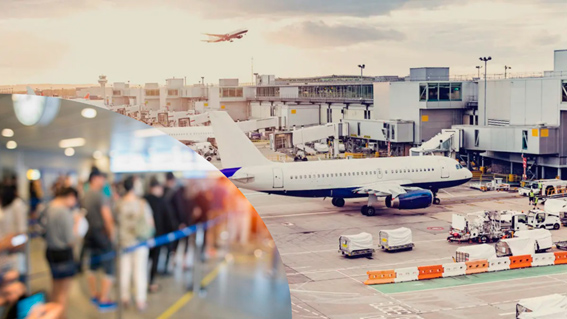
Recent changes in Brazil's immigration policies, especially those aimed at combating human trafficking, have had a significant impact on the country's main points of entry. São Paulo/Guarulhos International Airport - Governor André Franco Montoro, better known as Guarulhos Airport, has been a focal point for these new measures, given its position as Brazil's largest and busiest international airport.
The Central Role of Guarulhos Airport
Guarulhos Airport, being the main air gateway to Brazil, has implemented a series of new measures aligned with national immigration policies and efforts to combat human trafficking:
- Advanced Control Center: In 2024, a state-of-the-art immigration control center was inaugurated at the airport, equipped with cutting-edge technology for passenger identification and screening.
- Specialized Teams: Formation of multidisciplinary teams composed of Federal Police agents, human rights specialists, and psychologists, dedicated to identifying possible cases of human trafficking.
- Private Interview Area: Creation of specific spaces for more detailed interviews with passengers who raise suspicions, ensuring privacy and respect for individual rights.
- Predictive Analysis System: Implementation of an artificial intelligence system that analyzes travel patterns and passenger information to identify potential risks.
Specific Measures at Guarulhos Airport
Enhanced Entry Procedures
- Advanced Biometric Verification: All international passengers are subject to biometric checks that include facial recognition and fingerprint reading.
- Selective Interviews: Based on risk analyses, some passengers may be selected for more detailed interviews conducted by specialized agents.
- Real-Time Document Verification: Implementation of a system that allows immediate verification of travel documents' authenticity with issuing authorities.
International Cooperation
- Liaison Officers: Presence of liaison officers from partner countries to facilitate communication and real-time information sharing.
- Joint Operations: Conducting coordinated operations with authorities from other countries to identify and dismantle international human trafficking networks.
Assistance to Potential Victims
- Support Center: Establishment of a support center at the airport to provide immediate assistance to potential victims of human trafficking, including legal and psychological support.
- Temporary Shelter Program: Partnership with local organizations to offer temporary shelter and assistance to individuals identified as possible victims.
Impacts and Challenges
The new measures at Guarulhos Airport have generated positive results but also present challenges:
- Increased Processing Time: More rigorous procedures may result in longer waiting times for international passengers.
- Privacy Concerns: The extensive use of recognition technology and data analysis raises questions about privacy and personal data protection.
- False Positives: There are concerns about the possibility of individuals being incorrectly identified as suspects, leading to inconveniences and possible rights violations.
- Infrastructure Capacity: The airport has faced challenges in adapting its infrastructure to new demands, especially during periods of high passenger flow.
Guarulhos Airport has become a model in implementing new immigration policies and combating human trafficking in Brazil. The measures adopted reflect a concerted effort to balance national security with respect for human rights and the facilitation of legitimate traveler flow.
As authorities continue to refine these approaches, it is crucial that travelers are aware of the new procedures and prepare accordingly. Passengers are advised to arrive at the airport well in advance, have all necessary documentation in order, and be prepared for possible additional questioning.
The experience at Guarulhos serves as a microcosm of the broader changes in Brazil's immigration policies, highlighting both the advances and ongoing challenges in the pursuit of a safer and more humane migration system.












